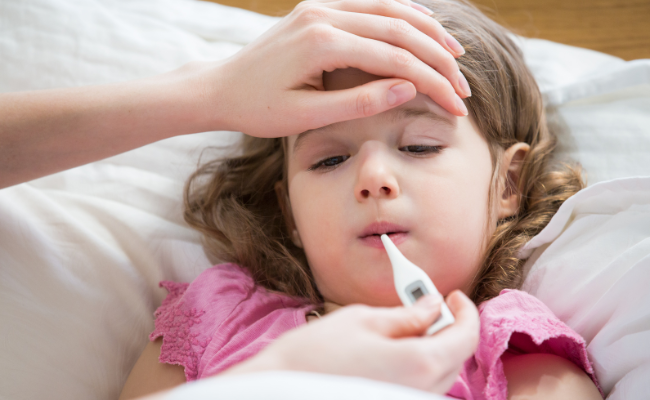How to Treat Fever In Children?
- November 07, 2023
- No Comments

What is Fever in Children?
Fever is prevalent among children, often a natural response to infections. It involves an elevation of body temperature beyond the typical range of around 98.6°F (37°C). It's a symptom, not a disease, signaling the body's defense against infection or underlying health issues. Although the standard body temperature is 98.6°F or 37°C, slight variations are normal. There's no need for alarm if your child's temperature exceeds this momentarily, as body temperatures naturally fluctuate during the day.
Why Do Children Get Fever?
Children can develop a fever for various reasons, most commonly due to viral or bacterial infections. Common infections that may cause fever include respiratory infections like the flu or cold, ear infections, urinary tract infections, and gastroenteritis. Additionally, vaccinations or teething can also sometimes cause a mild increase in body temperature.
How to Identify and Monitor Fever in Children?
Identifying fever in children involves monitoring their body temperature. A rectal temperature above 100.4°F (38°C), an oral temperature above 99.5°F (37.5°C), or an armpit temperature above 99°F (37.2°C) is generally considered indicative of a fever in children. It's essential to use an appropriate thermometer and follow the recommended guidelines for accurate measurement.
Regular monitoring of the child's overall well-being, behavior, and additional symptoms such as cough, runny nose, or vomiting can also help in assessing the severity of the fever and any underlying cause.
Treatment Solutions for Fever in Children:
- Hydration: Maintaining adequate fluid intake is crucial when a child has a fever. Fever can lead to increased fluid loss through sweating and evaporation, and dehydration is a concern. Encouraging the child to drink water, clear fluids, or electrolyte solutions helps prevent dehydration.
- Temperature Regulation: Employing methods to regulate the child's body temperature can provide relief. This includes removing excess clothing, keeping the room at a comfortable temperature, and using fans. Lukewarm sponge baths or compresses may also be used, avoiding cold water to prevent shivering.
- Over-the-Counter Medications: Acetaminophen (Tylenol) or ibuprofen (Advil, Motrin) are commonly used over-the-counter medications to reduce fever and alleviate discomfort. It's crucial to follow the dosing instructions provided by healthcare professionals and avoid giving aspirin to children, especially if there is a risk of Reye's syndrome.
- Prescription Medications: In some cases, especially when the fever is a result of a bacterial infection, the healthcare provider may prescribe antibiotics. It's essential to complete the full course of antibiotics as directed, even if the child's symptoms improve before the medication is finished.
- Rest and Comfort: Adequate rest is vital for recovery. Ensuring the child gets enough sleep and creating a comfortable environment can contribute to the healing process.
Benefits of Treating Fever in Children:
- Symptomatic Relief: Treating fever provides symptomatic relief, reducing discomfort and promoting a sense of well-being in the child. This is particularly important for enhancing their overall quality of life during the illness.
- Prevention of Dehydration: Fever can lead to increased fluid loss, and adequate hydration helps prevent dehydration, which is crucial for the child's health and recovery.
- Facilitation of Healing: Addressing the underlying cause of the fever, whether it's a viral or bacterial infection, helps facilitate the healing process. This may involve the use of medications such as antibiotics when necessary.
- Prevention of Complications: Timely and appropriate treatment of fever in children helps prevent potential complications associated with certain infections. For instance, prompt antibiotic treatment for bacterial infections reduces the risk of complications spreading to other parts of the body.
- Comfort and Well-Being: The treatment of fever focuses not only on physical recovery but also on the child's comfort and well-being. This holistic approach contributes to a faster and smoother recovery process.
Comments (0)